Thingiverse

ATMega Development System
by Thingiverse
Last crawled date: 4 years, 4 months ago
ATMega Development System
This development system emulates a Arduino UNO. It incorporates both FTDI and ISP programming systems. It also contains its own power supply which is switchable between 5V or 3V3. The crystal can be changed allowing development of both 8MHz and 16MHz systems. The ATMega chip (be that an ATMega8, ATMega48, ATMega168 or ATMega328) plugs into a Zero-Insertion-Force socket. The development system incorporates a small breadboard with supply pins built-in. New headers allow access to all analog and digital pins even when using a shield that doesn't extend the Arduino pin headers.
Parts
1x 400 Points Solderless Breadboard
1x USBtinyISP programmer
1x FT232RL 3.3V 5.5V FTDI USB to TTL Serial Adapter Module for Arduino
1x ATMega328
1x 28pin ZIF socket
1x 8Mhz HC-49S crystal
1x 16Mhz HC-49S crystal
2x 3pin Female machine headers
1x 330R 1206 resistor
2x 1K 1206 resistors
3x 0R 1206 resistors
1x 1M 1206 resistor
1x 10K 1206 resistor
5x 0.1uf 1206 capacitors
2x 22pF 1206 capacitors
2x 47uF 10V tantalum 3528 SMD capacitors
1x 1N4148 SMD diode
1x 3mm Red LED
1x 3mm Green LED
1x LM1117-5 SOT223 Regulator
1x LM1117-33 SOT223 Regulator
1x 6x6mm Switch
1x 3 Pin Male Header and Jumper
1x 2 Pin Male Header and Jumper
1x 2.54mm 2x3 Pin Straight Male Shrouded IDC Header
1x 6 Pin Male Header
1x 14 Pin Female Header
1x 6 Pin Female Header
2x 8 Pin Female Header with long pins
2x 6 Pin Female Header with long pins
1x DC Power Supply Jack Socket Female Panel Mount Connector 3Pin 5.5x2.1mm
4x M3 x 6mm screws
Building the Development kit
Eagle files have been included. I made my board using the toner method. The board requires 6 wire links on the back. I have added SMD pads to make the soldering the wire links to the board easier.
Using the Development system
The system is configured as a Arduino UNO. To support a ATMega328 running at 8MHz, you need to update your Boards.txt file.
Create a new entry in the Boards.txt file for a 8MHz Arduino UNO. (%USERPROFILE%\AppData\Local\Arduino15\packages\arduino\hardware\avr\1.8.1\boards.txt)
##############################################################
uno8.name=Arduino Uno (8Mhz)
uno8.vid.0=0x2341
uno8.pid.0=0x0043
uno8.vid.1=0x2341
uno8.pid.1=0x0001
uno8.vid.2=0x2A03
uno8.pid.2=0x0043
uno8.vid.3=0x2341
uno8.pid.3=0x0243
uno8.upload.tool=avrdude
uno8.upload.protocol=arduino
uno8.upload.maximum_size=32256
uno8.upload.maximum_data_size=2048
uno8.upload.speed=57600
uno8.bootloader.tool=avrdude
uno8.bootloader.low_fuses=0xFF
uno8.bootloader.high_fuses=0xDA
uno8.bootloader.extended_fuses=0xFE
uno8.bootloader.unlock_bits=0x3F
uno8.bootloader.lock_bits=0x0F
uno8.bootloader.file=optiboot/optiboot_atmega328.hex
uno8.build.mcu=atmega328p
uno8.build.f_cpu=8000000L
uno8.build.board=AVR_UNO_8
uno8.build.core=arduino
uno8.build.variant=standard
##############################################################
In the Arduino IDE
Select "Tools - Board - Arduino Uno (8Mhz)"
Select "Tools - Programmer - USBtinyISP"
Plug in your USBtinyISP to the ATMega328 (should be running a 8MHz crystal)
Select "Tools - Burn bootloader"
Load up the sketch in the IDE
Select "Sketch - Upload using programmer"
If you want to use the Serial object to write messages to the Ardunio console, you will need to have a USB cable plugged into the FTDI programmer.
This development system emulates a Arduino UNO. It incorporates both FTDI and ISP programming systems. It also contains its own power supply which is switchable between 5V or 3V3. The crystal can be changed allowing development of both 8MHz and 16MHz systems. The ATMega chip (be that an ATMega8, ATMega48, ATMega168 or ATMega328) plugs into a Zero-Insertion-Force socket. The development system incorporates a small breadboard with supply pins built-in. New headers allow access to all analog and digital pins even when using a shield that doesn't extend the Arduino pin headers.
Parts
1x 400 Points Solderless Breadboard
1x USBtinyISP programmer
1x FT232RL 3.3V 5.5V FTDI USB to TTL Serial Adapter Module for Arduino
1x ATMega328
1x 28pin ZIF socket
1x 8Mhz HC-49S crystal
1x 16Mhz HC-49S crystal
2x 3pin Female machine headers
1x 330R 1206 resistor
2x 1K 1206 resistors
3x 0R 1206 resistors
1x 1M 1206 resistor
1x 10K 1206 resistor
5x 0.1uf 1206 capacitors
2x 22pF 1206 capacitors
2x 47uF 10V tantalum 3528 SMD capacitors
1x 1N4148 SMD diode
1x 3mm Red LED
1x 3mm Green LED
1x LM1117-5 SOT223 Regulator
1x LM1117-33 SOT223 Regulator
1x 6x6mm Switch
1x 3 Pin Male Header and Jumper
1x 2 Pin Male Header and Jumper
1x 2.54mm 2x3 Pin Straight Male Shrouded IDC Header
1x 6 Pin Male Header
1x 14 Pin Female Header
1x 6 Pin Female Header
2x 8 Pin Female Header with long pins
2x 6 Pin Female Header with long pins
1x DC Power Supply Jack Socket Female Panel Mount Connector 3Pin 5.5x2.1mm
4x M3 x 6mm screws
Building the Development kit
Eagle files have been included. I made my board using the toner method. The board requires 6 wire links on the back. I have added SMD pads to make the soldering the wire links to the board easier.
Using the Development system
The system is configured as a Arduino UNO. To support a ATMega328 running at 8MHz, you need to update your Boards.txt file.
Create a new entry in the Boards.txt file for a 8MHz Arduino UNO. (%USERPROFILE%\AppData\Local\Arduino15\packages\arduino\hardware\avr\1.8.1\boards.txt)
##############################################################
uno8.name=Arduino Uno (8Mhz)
uno8.vid.0=0x2341
uno8.pid.0=0x0043
uno8.vid.1=0x2341
uno8.pid.1=0x0001
uno8.vid.2=0x2A03
uno8.pid.2=0x0043
uno8.vid.3=0x2341
uno8.pid.3=0x0243
uno8.upload.tool=avrdude
uno8.upload.protocol=arduino
uno8.upload.maximum_size=32256
uno8.upload.maximum_data_size=2048
uno8.upload.speed=57600
uno8.bootloader.tool=avrdude
uno8.bootloader.low_fuses=0xFF
uno8.bootloader.high_fuses=0xDA
uno8.bootloader.extended_fuses=0xFE
uno8.bootloader.unlock_bits=0x3F
uno8.bootloader.lock_bits=0x0F
uno8.bootloader.file=optiboot/optiboot_atmega328.hex
uno8.build.mcu=atmega328p
uno8.build.f_cpu=8000000L
uno8.build.board=AVR_UNO_8
uno8.build.core=arduino
uno8.build.variant=standard
##############################################################
In the Arduino IDE
Select "Tools - Board - Arduino Uno (8Mhz)"
Select "Tools - Programmer - USBtinyISP"
Plug in your USBtinyISP to the ATMega328 (should be running a 8MHz crystal)
Select "Tools - Burn bootloader"
Load up the sketch in the IDE
Select "Sketch - Upload using programmer"
If you want to use the Serial object to write messages to the Ardunio console, you will need to have a USB cable plugged into the FTDI programmer.
Similar models
thingiverse
free

Arduino Hourglass Timer
...on the atmega328 didn't read or write when running on 3v3 but was fine on 5v. if anyone finds a solution, please let me know.
thingiverse
free

FabDuino v1.1 by dimrobotics
...al
:::upd::: i reccomend to buy sparkfun arduino ready version of atmega328 so you do not need to flash bootloader by your own.
thingiverse
free

USBTinyISP AVR ISP Programmer Case by Aegys3D
... avrdude supports ( as atmel chips )
suscribe my facebook page for the next releases : https://www.facebook.com/aegys3d
thank you
3dwarehouse
free

FTDI PIN HEADER
...ftdi pin header
3dwarehouse
ftdi pin header #ftdi #header
3dwarehouse
free

FTDI PIN HEADER
...ftdi pin header
3dwarehouse
ftdi pin header #ftdi #header
grabcad
free

FTDI Module (Sparkfun)
...ftdi module (sparkfun)
grabcad
ftdi module from sparkfun with female pin header
grabcad
free

LilyPad Arduino ATMega328
...rduino atmega328
grabcad
lilypad arduino atmega328, 1.6mm thick (non-flex) pcb. non-usb version (regular uart on 6 pin header).
grabcad
free

2.4" LCD screen for Arduino UNO
...2.4" lcd screen for arduino uno
grabcad
2.4in tft screen shield for arduino uno with driver spfd5408.
no pin headers.
3dwarehouse
free
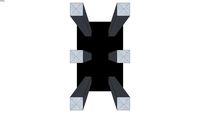
Header arduino chipkit female long pin 2x3
...ehouse
header arduino chipkit female long pin 2x3 pin spacing - 2,54mm long pin header for stackable arduino or chipkit porjects
3dwarehouse
free

Header Arduino Chipkit Female Long Pin 1X8
...ehouse
header arduino chipkit female long pin 1x8 pin spacing - 2,54mm long pin header for stackable arduino or chipkit porjects
Atmega
turbosquid
$5

Atmel Atmega 328p-pu
... available on turbo squid, the world's leading provider of digital 3d models for visualization, films, television, and games.
thingiverse
free

Christmas Tree ATmega (arduino)
...s://www.thingiverse.com/thing:3296375
how make pcb led this link
https://www.instructables.com/id/christmas-tree-atmega-arduino/
thingiverse
free

Akizuki Denshi AE-ATmega Breadboard by almajiro
...lmajiro
thingiverse
this is the board for you to put the ae-atmega of akizuki denshi. you can paste the breadboard to the right.
thingiverse
free

carte ATmega 2560 R3 by xaviou
...carte atmega 2560 r3 by xaviou
thingiverse
pour création de projet,
fichier stl pour dimension
thingiverse
free
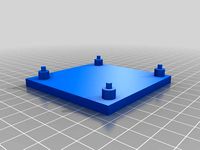
Halterung ATMega 328P Xplained mini Borad by pesterr
...halterung atmega 328p xplained mini borad by pesterr
thingiverse
halterung für entwicklungsboard von atmel
thingiverse
free

Case Ramps 1.4 Atmega by Baumgardt
...4 atmega by baumgardt
thingiverse
case fo ramps 1.4
top whit 40x40 fan hole
back whit 4x panel connector holes
no support neded!
thingiverse
free

ATMega Fuse Doctor
...cs-dc-power-supply-jack-socket-female-panel-mount-connector-3-pin-5-5-x-2-1mm/264475807135?hash=item3d93fc8d9f:g:p4maaoswnk9zqlwg
thingiverse
free

CTC prusa i3 DIY (ATMEGA 1284p) 2mm pitch lead screw replace and firmware update (marlin 1.1.8) by NoboruKato
....1.8) by noborukato
thingiverse
ctc prusa i3 diy (atmega 1284p) 2mm pitch lead screw replace and firmware update (marlin 1.1.8)
thingiverse
free

AVR transistor tester by marinozacc
...this is a box for a tester based on atmega ...
Development
turbosquid
$14

housing development
... available on turbo squid, the world's leading provider of digital 3d models for visualization, films, television, and games.
turbosquid
$100

Proposed Residential Development
...3d model proposed residential development for download as rvt on turbosquid: 3d models for games, architecture, videos. (1309182)
turbosquid
$15

gaming developing character
...model gaming developing character for download as obj and fbx on turbosquid: 3d models for games, architecture, videos. (1171181)
turbosquid
$8

OUTDOOR LEG DEVELOPMENT
... available on turbo squid, the world's leading provider of digital 3d models for visualization, films, television, and games.
3d_export
$11

dodge viper developments
...dodge viper developments
3dexport
unfinished dodge viper multi-polygonal
turbosquid
$6

Furniture Set for Game Development
...niture set for game development for download as blend and fbx on turbosquid: 3d models for games, architecture, videos. (1676689)
3d_export
free
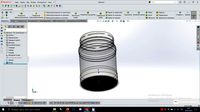
bank developed in solidworks 2020
...bank developed in solidworks 2020
3dexport
3d_export
$5
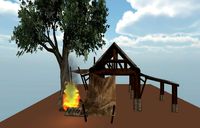
Cottage For Game Developers 3D Model
...game developers 3d model
3dexport
untiy3d cry engine unreal engine fbx
cottage for game developers 3d model websss 56680 3dexport
turbosquid
$44
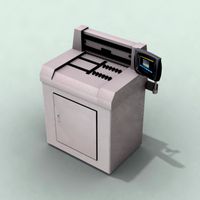
X-RAY FIlm Developer 3DS
... available on turbo squid, the world's leading provider of digital 3d models for visualization, films, television, and games.
turbosquid
$300

Uterus different stages of development cut label
...fferent stages of development cut label for download as blend on turbosquid: 3d models for games, architecture, videos. (1481240)
System
archibase_planet
free
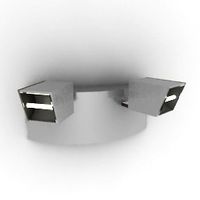
System
...m
archibase planet
fire alarm system fire alarm box
security light system - 3d model (*.gsm+*.3ds) for interior 3d visualization.
archibase_planet
free
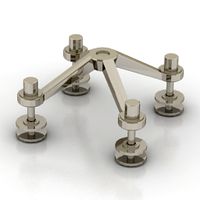
Spider system
...stem spider glass system
spider system to fix glass stefano galli n050912 - 3d model (*.gsm+*.3ds) for interior 3d visualization.
3ddd
$1

Euforia System
...euforia system
3ddd
euforia
euforia system
3d_export
$50
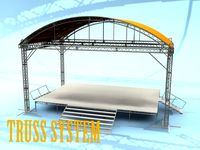
Roof system Truss system 3D Model
...oof system truss system 3d model
3dexport
roof system truss truss stage
roof system truss system 3d model aleksbel 38970 3dexport
3ddd
$1

DVD System
...dvd system
3ddd
dvd , schneider
dvd system
design_connected
free

Seating system
...seating system
designconnected
free 3d model of seating system
3d_export
$5

solar system
...solar system
3dexport
solar system in c4d, with 8k nasa textures
3ddd
$1
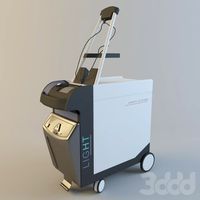
Quanta System
...quanta system
3ddd
медицина
quanta system.
лазерное оборудование для медицинских центров
3d_export
$15
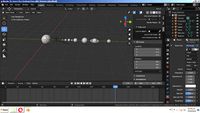
solar system
...nd the other the sun, the earth and the moon, the latter has an animation with camera movement included, the files are in spanish
3d_export
$14
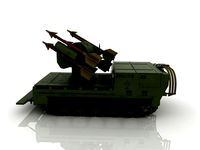
missile system
...missile system
3dexport
